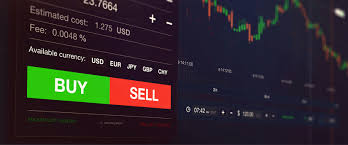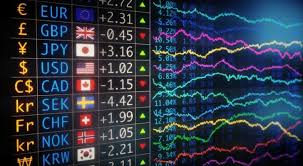
How to Start Forex Trading: A Comprehensive Guide for Beginners
Forex trading, or foreign exchange trading, involves buying and selling currencies to profit from fluctuations in exchange rates. For those looking to navigate this exciting financial market, it’s essential to have a solid foundation. Whether you’re considering trading as a hobby or a potential career, this guide will help you understand how to get started. We will discuss key concepts, the importance of a reliable broker, and strategies to enhance your trading experience. To facilitate your journey in the Forex market, consider exploring how to start forex trading Forex Brokers in Argentina for local options.
Understanding Forex Trading Basics
Before diving into the world of Forex trading, it’s critical to grasp the fundamental concepts that govern this market. Here are some key terms to understand:
- Currency Pairs: Forex trading involves trading currency pairs, such as EUR/USD, where you buy one currency while selling another.
- Pips: A pip (percentage in point) is the smallest price move in a currency pair, typically the fourth decimal place.
- Leverage: Leverage allows traders to control larger positions with a smaller amount of capital, amplifying both potential profits and losses.
- Margin: Margin is the amount of money needed to open a leveraged position, acting as a good faith deposit.
- Spread: The spread is the difference between the bid price and the ask price of a currency pair.
Choosing a Forex Broker
One of the most critical steps in starting Forex trading is selecting a reliable broker. Your choice will significantly impact your trading experience. Here are some considerations to keep in mind:
- Regulation: Choose brokers that are regulated by reputable authorities to ensure compliance with financial standards.
- Trading Platform: Look for brokers that offer user-friendly platforms with the necessary tools for analysis and execution.
- Spreads and Commissions: Compare the costs associated with trading, including spreads and commissions, to find a competitive option.
- Customer Support: Quality customer support is vital, especially for beginners who may need assistance when navigating the trading platform.
- Account Types: Many brokers offer different account types; ensure that the one you choose aligns with your trading goals.
Setting Up Your Trading Account
After choosing a broker, you will need to set up a trading account. Most brokers offer a straightforward registration process:
- Complete the Registration Form: Provide your personal information and verify your identity.
- Deposit Funds: Fund your trading account using available payment methods like bank transfer, credit/debit card, or e-wallets.
- Download Trading Platform: Depending on your broker, you may need to download the trading platform software or access it via a web-based interface.

Developing a Trading Strategy
A successful Forex trader doesn’t simply jump into trades without a strategy. Developing a trading plan that includes your goals, risk tolerance, and trading style can enhance your chances of success. Here are some popular strategies:
- Scalping: Involves making many small trades throughout the day to capitalize on minor price movements.
- Day Trading: This strategy entails opening and closing positions within the same trading day to avoid overnight risks.
- Swing Trading: Swing traders hold positions for several days or weeks, aiming to profit from price swings.
- Position Trading: A long-term approach where traders hold positions for several months to exploit significant market movements.
Risk Management in Forex Trading
One of the most crucial aspects of trading is managing risk effectively. Here are some tips to ensure that you protect your investment:
- Use Stop-Loss Orders: Implementing stop-loss orders can help limit potential losses by automatically closing trades at predefined levels.
- Only Trade with Capital You Can Afford to Lose: Never invest money that you cannot afford to lose, as Forex trading carries inherent risks.
- Diversify Your Trades: Avoid putting all your funds into a single trade; diversifying your portfolio can mitigate the risks.
- Maintain a Trading Journal: Keep track of your trades to analyze mistakes and successes, helping improve your strategy over time.
Utilizing Technical and Fundamental Analysis
Understanding market analysis will further enhance your Forex trading abilities. There are two main types of analysis:
- Technical Analysis: This involves examining price charts and patterns to forecast future movements based on historical data.
- Fundamental Analysis: This focuses on economic indicators, news, and events that may impact currency values, such as interest rates and GDP reports.
Continuous Learning and Improvement
Forex trading is a dynamic market that requires continuous education. Regularly updating your knowledge of market trends, economic events, and trading technologies can provide a competitive edge. Participate in online forums, attend webinars, and consider using demo accounts to practice your strategies before risking real money.
Conclusion
Starting your journey in forex trading may seem daunting at first, but with the right knowledge, tools, and strategies, success is within reach. Remember to choose a trustworthy broker, develop a sound trading strategy, and prioritize risk management. As you embark on this exciting venture, maintain a commitment to continuous learning and adaptation—this will be your key to thriving in the ever-evolving world of Forex trading.